
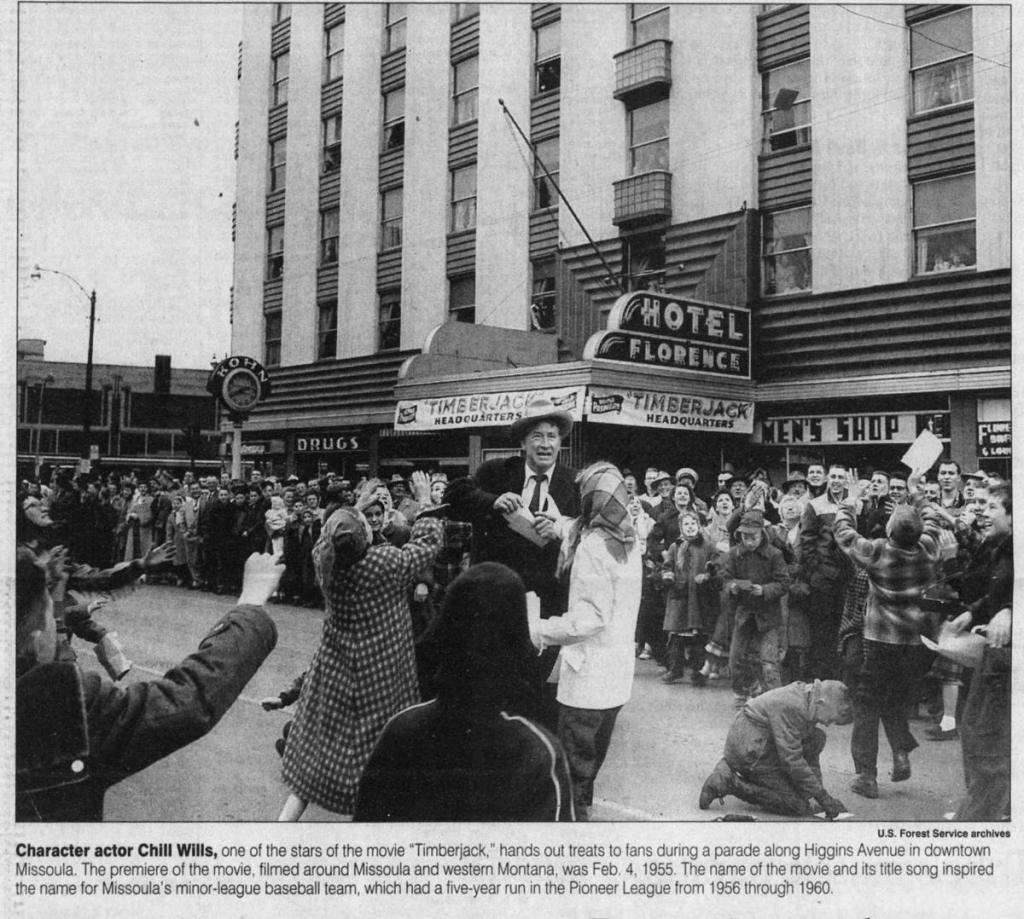
I was born on October 8, 1946 at 6:02 P.M. during an amazing star-shower in Oakland California. This morning I discovered Hoagy Carmichael lived in Missoula Montana as a boy. He returned there to play Jingles in the movie ‘Timberjack’. Hoagy was a model for James Bond. How much Ian Fleming was inspired by this singer, is to be revealed. My muse, Rena Easton, lives in Montana. She is the inspiration for Victoria Rosemond Bond the granddaughter of James. One day I will go to Montana – as a hero!
Hoagy sang ‘He’s Dead But He Won’t Lie Down’ in Timberjack. You can say this about James Bond. I had Artaud and Van Gough coming to a arts festival in Bozeman, and Kirk Douglas? That a Big Timber movie is made to be a musical venue for Carmichael is typical of this era where movie goers want the Music Bonus. Why not make a James Bond Musical, and, ‘One Flew Over The Cuckoo’s Nest’ Musical? Kesey did write a murder mystery. The killer got away. The Singing Killer Agent. Have James be a member of The Barbershop Quartet.
John Presco
President: Royal Rosamond Press
Fleming decided that Bond should resemble both American singer Hoagy Carmichael and himself[7] and in Casino Royale, Vesper Lynd remarks, “Bond reminds me rather of Hoagy Carmichael, but there is something cold and ruthless.” Likewise, in Moonraker, Special Branch Officer Gala Brand thinks that Bond is “certainly good-looking … Rather like Hoagy Carmichael in a way. That black hair falling down over the right eyebrow. Much the same bones. But there was something a bit cruel in the mouth, and the eyes were cold.”[7]
HE’S DEAD, BUT HE WON’T LIE DOWN Gracie Fields (with Ray Noble’s Orch) – 1932 My Sister’s young man is a hundred and three Yes, a hundred and three is he And he’s real cold storage meat From his head right to his feet He’s dead, but he won’t lie down Now, she’s his Juliet and he’s her Romeo Though his real name is Septimus Brown From his soul romance has fled Still she likes his old bald head He’s dead, but he won’t lie down He won’t lie down He’s dead, but he won’t lie down At a movie show once, full of passion and love He said, “Be Mrs. Septimus Brown”, huh-huh And although he’d got the cramps He said, “Vamp me, Darling, vamp”, hee-hee-hee-hee He’s dead, but he won’t lie down
HE’S DEAD, BUT HE WON’T LIE DOWN – Lyrics – International Lyrics Playground
A cast member in “Timberjack” also had a Missoula connection. Hoagy Carmichael went to Lowell School in 1910. He played the piano-playing Jingles but was better known as the composer of such standards as “Stardust” and “Georgia On My Mind.” Carmichael contributed four tunes to the movie, though not the theme song.
Three years and a couple of weeks later, the Forest Service was again part of the party for “Timberjack.” The Missoulian-Sentinel parade photo was taken from the other (west) side of Higgins, with the Missoula Mercantile in the background. Said the cutline:
“Thousands of persons — estimates ranged from 10,000 to 30,000 — lined Higgins avenue from the Northern Pacific passenger station to the high school Friday to watch a long parade, staged in connection with the premiere of the motion picture, ‘Timberjack,’ and the 50th anniversary of the Forest Service. The parade took 30 minutes to pass. A helicopter made low passes over the column, distributing leaflets. Passing when this photograph was taken was old-fashioned equipment, including a logging outfit of years ago.”
“A dazzling premiere and a huge parade Friday climaxed Timberjack Days as Missoula stole the motion picture capital from Hollywood. Huge lights stabbed through the snowy sky as the stars of “Timberjack” arrived at the Fox Theater to the accompaniment of flashbulbs and microphones. But the parade in the afternoon — with the snow holding off until the spectacle was completed — almost stole the show.
Big Bucks in ‘The Big Trees’
Posted on June 9, 2021 by Royal Rosamond Press


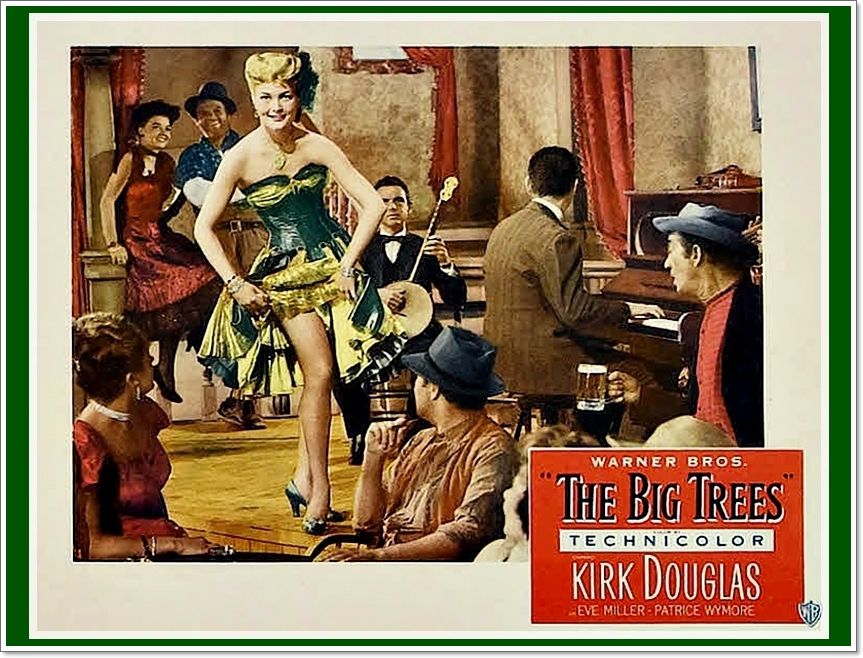



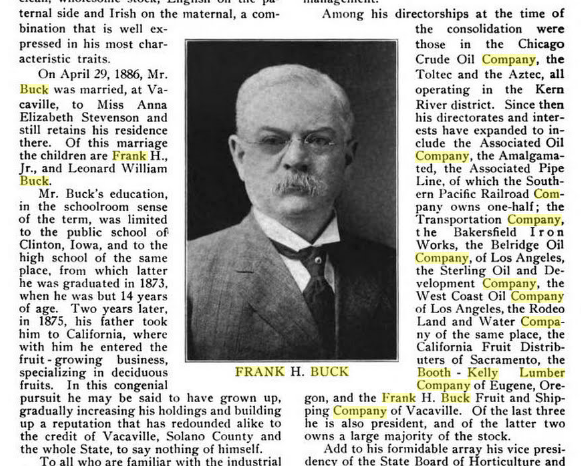
The Montana Rose Mountain
Posted on June 14, 2021 by Royal Rosamond Press
Royal’s Montana Stories
Posted on July 7, 2018 by Royal Rosamond Press


My grandfather lived in Montana.
Jon


In Rosamond There Is No East or West | Rosamond Press
Rob Quist of Montana | Rosamond Press
A Voice of the Mountainhttps://books.google.com/books?id=TO5YAAAAMAAJ&pg=PA377&lpg=PA377&dq=%E2%80%98The+Voice+of+the+Mountain+rosamond&source=bl&ots=MUdPlL_dTG&sig=y8hwc_d-PQCy8y-o5E7HVELy210&hl=en&sa=X&ved=0ahUKEwjJ4ZaTyIzcAhUjHzQIHSb_DFEQ6AEIXDAL#v=onepage&q=%E2%80%98The%20Voice%20of%20the%20Mountain%20rosamond&f=falsehttps://books.google.com/books?id=He5YAAAAMAAJ&pg=PA249&lpg=PA249&dq=squaw+girl+out+west&source=bl&ots=d3cUXarxCO&sig=dJD9TeMCorwLLO36Hw5p-BoYZcw&hl=en&sa=X&ei=xkP0Uff0MIGDjAL88IGYBw&ved=0CDAQ6AEwAQ#v=onepage&q=squaw%20girl%20out%20west&f=false
Dragon and Comet Born
Posted on February 23, 2014 by Royal Rosamond Press





The Seer who saw my death said this;
“People come into your being and take, take, take! You are powerless to stop them. I don’t know why.”
In 1970 there were two very beautiful women in my life, Christine Rosamond Benton, and Rena Easton. They came into my being, and took. I did not want to stop them if I could. I could not, because the Avatar was working directly with them. I was just the Messenger – of course! When you die, and come back, you are an Angel. Rena almost figured that out on Christmas Day. Her card was dropping little green stars upon her words.
Jon The Messenger
https://rosamondpress.wordpress.com/2013/08/11/born-under-a-shower-of-stars/
I was born October 8, 1946 two minutes after the sun set. An amazing star-shower was suddenly visible. The nurses in the maternity ward bid my mother to come to the window and look, but, was too spent having just delivered me.
Rosemary said she had a vision while she was giving birth to me, she telling herself she must not forget it. She forgot.
Rosemary named me after John the Baptist because she believed I was born on the Day of Atonement, Yom Kippur. I was born three days after Yom Kippur.
When my Astrologer began her five hour (recorded) reading of my chart, she began
with these words;
“Jon, I have never seen a chart like yours, never knew it was possible. It
begins where all charts in theory begin, on the exact cusp of Pisces and Aries..
For this reason I had to move up the time of your birth ten minutes, or in
theory, you were not born. As it is now, you barely escaped becoming a veritable
prisoner in this lifetime, that is, all the information you came here to share.”
I believe I was born to die, and when I did, my clock was readjusted so my information could be set free. My astrologer said I am of the great Scorpion Scholars of the Biblical Wilderness who sting themselves in order to induce a near-death experience and behold the Creator, if only for a little while.
The large painting I did of Rena had her standing on a grassy hill after the sun
had set and the evening sky was a rainbow with stars coming out in the thalo
blue. There was a crescent moon cradling a star. Rena was wearing a thalo blue
cape the color of Carla Bruni’s sweater. I painted stars along the edge. For two
months I have been thinking of posting this photo, for the entity I saw was
wearing a thalo blue robe and had jet black hair filled with tiny stars like
diamonds.
My freed information needed the imput of female information. When our hands touched in the total darkness an amazing download began. It was and electrical experience.
Rena and I spent six weeks together. We never listened to a radio, watched TV..
or went to a movie. We had no friends. We had no electricity, and lived by
candlelight. But what we did every night on our mountain top, was watch the
sunset, and the gods paint the sky with stars. And then we went to be bed, and
in each other’s arms we dreamt a dream of long ago. And we go wherever the stars
took us that night.
Jon Gregory Presco
The October Draconids, in the past also unofficially known as the Giacobinids, are a meteor shower whose parent body is the periodic comet 21P/Giacobini-Zinner. Almost all meteors which fall towards Earth ablate long before reaching its surface. The Draconids are best viewed after sunset in an area with a clear dark sky.
The 1933[1][2] and 1946[2] Draconids had Zenithal Hourly Rates of thousands of meteors visible per hour, among the most impressive meteor storms of the 20th century. Rare outbursts in activity can occur when the Earth travels through a denser part of the cometary debris stream; for example, in 1998, rates suddenly spiked[3][4] and spiked again (less spectacularly) in 2005.[5] A Draconid meteor outburst occurred[6] as expected[7][8][9] on 2011 October 8, though a waxing gibbous Moon reduced the number of meteors observed visually. During the 2012 shower radar observations detected up to 1000 meteors per hour. The 2012 outburst may have been caused by the narrow trail of dust and debris left behind by the parent comet in 1959.[10]
The Draconids get their name from the constellation Draco, the Dragon.
In 1933 and 1946, the Draconid outbursts were major – observers reported an astounding rate of 20,000 shooting stars an hour. An Irish astronomer described the 1933 episode like a flurry of snowflakes.
http://earthsky.org/tonight/legendary-draconids-boom-or-bust
“I am the Rouge Dragon!” | Rosamond Press
“Poetry on Leaves
The spring sun was warm now, brightening as with happiness in the
open fields, the broad land resembling a crazy quilt because of the
wooded patches everywhere. Already the wild grapes were in bloom,
and if the sun continued smiling there would be, in every Hillman’s
cellar, many, many jars of grape juice for making jelly, and wine
for those who knew the trick of making it. Those pink-white blossoms
on the pale yellow bushes hard against warm hillside rocks were
huckleberries in bloom. The wild grapes and the huckleberries once
ripe, tangier here in Shannon County, Missouri, than most any other
place in the Ozarks.
I walked on, for I had yet a long way to go before nightfall. Now it
was but a mite after mid-day. After leaving the train at Winona, I
could have perhaps caught a ride to Eminence had I stayed with the
wagon road instead of footing it up the spur-track leading northward
to cross Jack’s Fork at the Hodge place where I left to journey up
Possum Trot toward Little Wonder Schoolhouse and Tucked Away Church
House, above which in the ride to the north, I lived – the place
where I was born and which I called home, where my parents had
settled in their youth and planned some day to die. The way was
long, the trail lonesome and ofttimes steep. As wild a region as
ever grew outdoors. No matter. I wanted to stretch my legs and let
the April breeze take the orders of a Saint Louis foundry away from
me.
I went home on a visit once a year – had already worked five years
up there, long enough to forget how to talk (or write) hillbilly
talk, it seemed like. Still, I didn’t mind being called a hillbilly.
Life in the Ozarks had a tang. I liked everything about them, from
the blooming of the redbud and dogwood in springtime to pumpkin pies
and possum and coon hunting and listening to fox hounds in the fall.
I was born and bred here. This wilderness was in my blood. I felt as
much a part of it as does a back log to a fireplace. I was twenty
six years old now, and when I become fifty, I intend to retire, and
go sit on pappy’s rocker there on the front porch and rock and smoke
and think until I die.
007, the quintessential English gentleman spy. Or is he? James Bond is actually half Swiss, his mother being from Canton Vaud. Monique Delacroix is presumably why he speaks fluent French. And also probably why Switzerland crops up so frequently in the books and films. Ian Fleming certainly knew Switzerland well enough to be quite detailed in his written descriptions, and many of the famous movie sequences are Swiss ones. Here are my favourite Swiss moments for Mr Bond:
Perhaps the most well-known is seen in On Her Majesty’s Secret Service. James (disguised as Sir Hilary Bray) is taken up to Piz Gloria, Blofeld’s mountain-top hideout, which is theoretically near St Moritz (hence the prefix Piz, which is used in Graubünden to mean peak). Piz Gloria is actually a revolving restaurant on top of Schilthorn in the Bernese Oberland (pictured above), and was being built when the movie was filmed. After the film’s release in 1969, the name stuck. Later, Bond breaks into a Bern lawyer’s office, located just next to the Hotel Schweizerhof.
The Man with the Red Tattoo – Wikipedia
On a flight from Japan to the United Kingdom, a young Japanese woman dies of a mysterious illness. The illness is a mutated version of the West Nile virus. James Bond finds out that not only was she the daughter of an important Japanese businessman, her entire family is also dead. James Bond travels to Japan in search of the killer. Here Bond reunites with his longtime friend Tiger Tanaka, who introduces him to a female Japanese agent who is later killed by the mutant virus.
For example, according to Charlie Higson’s Young Bond books, another official series based on Fleming’s story, the secret agent was actually born in Zürich.
But then, according to the passport given to Daniel Craig as a prop in the movie Casino Royale, Bond was born in West Berlin — and way later, on April 13, 1968.
Experts who have tried to crosscheck James Bond’s biography in detail, such as John Griswold in Ian Fleming’s James Bond: Annotations and Chronologies for Ian Fleming’s Bond Stories, have noted different background inconsistencies emerging from the author’s own novels. Apparently, that didn’t bother Fleming too much.
Film journalist and Bond expert Siegfried Tesche sees Pearson’s version as the authoritative one, since the biography author knew Fleming very well. Tesche also argues that many official events still celebrate Bond’s birthday on November 11, based on Pearson’s account.
James Bond: Born in Germany? | Books | DW | 01.02.2019
“I am the Rouge Dragon!” | Rosamond Press
The Red Hand of Bond
Posted on September 5, 2018 by Royal Rosamond Press




James Bond Fans have gone over every Bong Thing with a fine-tooth comb, and, can not answer the riddle of the Red Hand of Ulster being in the Bond cote of arms.
John Presco 007
https://www.araltas.com/features/oneill/
https://en.m.wikipedia.org/wiki/File:Bond-coat-of-arms_(semi-fictional).svg
https://oneill.nd.edu/history/the-red-hand-of-oneill/
http://www.ronsattic.com/redhand.html
Red Hand of Ulster
From Wikipedia, the free encyclopedia
Jump to navigation Jump to search“Red Hand” redirects here. For other uses, see Red hand.


The Red Hand of Ulster, right and left hand versions
The Red Hand of Ulster (Irish: Lámh Dhearg Uladh) is an Irish symbol used in heraldry[1] to denote the Irish province of Ulster. It is an open hand coloured red, with the fingers pointing upwards, the thumb held parallel to the fingers, and the palm facing forward. It is usually shown as a right hand, but is sometimes a left hand, such as in the coats of arms of baronets.
Contents
Historical background[edit]
Original Red Hand Seal of Ó Néill
The Red Hand is rooted in Gaelic culture and, although its origin and meaning is unknown, it is believed to date back to pagan times.
The Red Hand is first documented in surviving records in the 13th-century, where it was used by the Hiberno-Norman de Burgh earls of Ulster.[2] It was Walter de Burgh who became first Earl of Ulster in 1243 who combined the de Burgh cross with the Red Hand to create a flag that represented the Earldom of Ulster and later became the modern Flag of Ulster.
It was afterwards adopted by the O’Neills (Uí Néill) when they assumed the ancient kingship of Ulster (Ulaid), inventing the title Rex Ultonie (king of Ulster) for themselves in 1317 and then claiming it unopposed from 1345 onwards.[3][4][5] An early Irish heraldic use in Ireland of the open right hand can be seen in the seal of Aodh Reamhar Ó Néill, king of the Irish of Ulster, 1344–1364.[6]
An early 15th-century poem by Mael Ó hÚigínn is named Lámh dhearg Éireann í Eachach,[7][8] the first line of which is a variation of the title: “Lamh dhearg Éiriond Ibh Eathoch”,[8] translated as “The Úí Eachach are the ‘red hand’ of Ireland”.[9] The Uí Eachach were one of the Cruthin tribes (known as the Dál nAraidi after 773[10]) that made up the ancient kingdom of Ulaid.[11][12]
The Red Hand symbol is believed to have been used by the O’Neills during its Nine Years’ War (1594–1603) against English rule in Ireland, and the war cry lámh dearg Éireann abú! (“the Red Hand of Ireland forever”) was also associated with them.[13] An English writer of the time noted “The Ancient Red Hand of Ulster, the bloody Red Hand, a terrible cognizance! And in allusion to that terrible cognizance- the battle cry of Lamh dearg abu!”[5]
The Order of Baronets was instituted by letters patent dated 10 May 1612, which state that “the Baronets and their descendants shall and may bear, either in a canton in their coat of arms, or in an inescutcheon, at their election, the arms of Ulster, that is, in a field argent, a hand gules, or a bloody hand.”[14] The oldest baronets used a dexter (right) hand just like the O’Neills, however it later became a sinister (left) hand.[14]
Dispute over ownership[edit]
The exclusive rights to the use of the Red Hand symbol has proved a matter of debate over the centuries, primarily whether it belonged to the O’Neills (Uí Néill) or the Magennises (Méig Aonghasa). The O’Neills became the chief dynasty of the Cenél nEógain of the Northern Uí Néill and later the kings of Ulster, whilst the Magennises were the ruling dynasty of the Uí Eachach Cobo, the chief dynasty of the Cruthin of Ulaid,[12] and also head of the Clanna Rudraige.[15] A 16th-century poem noted disagreement between the “Síol Rúraí” (an alias for Clanna Rudraige) and the Northern Uí Néill.
A dispute, dated to 1689, arose between several Irish poets about whose claim to the Red Hand was the most legitimate.[2][16][17]
- Diarmaid Mac an Bhaird, one of the last fully trained Irish bardic poets,[18] admonishes the claim of the O’Neills to the Red Hand, arguing that it rightly belongs to the Magennises, who should be allowed to keep it.[16] He supports his statement citing several medieval texts attributing it to Conall Cernach, the legendary ancestor of the Uí Eachach Cobo.[16]
- Eoghan Ó Donnghaile refutes the Clanna Róigh (Clanna Rudraige) right to the symbol.[16] He cites a story based on the Lebor Gabála Érenn claiming that it belongs to the descendants of Érimón, from whom Conn of the Hundred Battles and thus the O’Neills are said to descend.[16]
- Niall Mac Muireadhaigh dismisses both these claims and states that the symbol belongs to the Clann Domhnaill (descended from the Three Collas, the legendary ancestors of the Airgíalla).[16] Mac Muireadhaigh derides Ó Donnghaile as a fool and finds it deplorable that he is an author.[16]
The Mill of the Red Hand
Posted on September 5, 2018 by Royal Rosamond Press
My grandson, Tyler Hunt, is my Heir.
John Presco
The Ulster-Scots and the Rosamond Mill
Posted on April 16, 2013by Royal Rosamond Press
Today at 1:30 P.M. I will be seeing an attorney in order to DISINHERIT my daughter, Heather Hanson, and make Jennifer Dundon, my Heir. I do this because my daughter is stupid, and Jennifer is a Historian. I can’t take our amazing family history with me, and my daughter hates my history. I have very little hope that my grandson, Tyler Hunt, will have an interest in his family, because he is being raised to be stupid too.
What I am going to leave Jennifer Dundon is my Intellectual Property. After I reveal the Norse Grail tomorrow, the name Rosamond will forever be associated with the Grail. Rosamond is a Family Brand Name, a Trademark I have developed over the years. It is associated with the Hobbit stories as well. I have long seen the Dundons as the Dunadan.
“In J. R. R. Tolkien’s legendarium, the Dúnedain (singular: Dúnadan, “man of the west”) were a race of Men descended from the Númenóreans who survived the sinking of their island kingdom and came to Eriador in Middle-earth, led by Elendil and his sons, Isildur and Anárion. They are also called the Men of the West and the Men of Westernesse (direct translations of the Sindarin term). They settled mainly in Arnor and Gondor.”
“Intellectual property (IP) is a legal concept which refers to creations of the mind for which exclusive rights are recognized.[1] Under intellectual property law, owners are granted certain exclusive rights to a variety of intangible assets, such as musical, literary, and artistic works; discoveries and inventions; and words, phrases, symbols, and designs. Common types of intellectual property rights include copyright, trademarks, patents, industrial design rights, trade dress, and in some jurisdictions trade secrets.”
Last week I had dinner with the Dundons. I tried to engage Jeremy Dundon in a conversation about his post on the Hobbits, to no avail. Like so many he is content to be a master of Pseudohistory. I percieve he thinks I am mad, but, masters of fake history are threatened by what I am doing, not just for my family, but, the family of Elizabeth Rosemond Taylor. Liz and I share the same grandfather. When I assicate the name of this famous actreess with the Grail, many will take note.
Above is a photp of me with Dottie Witherspoon who desends from John Knox Witherspoon ‘The Signer’ and John Knox the Father of the Reformation. This link is in question because John Knox married Mary Stewart, who I and all Rosamonds are kin to via the marriage of the world famous artist, Christine Rosamond Benton.
Above is a photo of the Rosamond Mill, and it owner, Bennett Rosamond, who was a Grand Master of the Oragne Lodge who are Ulster-Scots. The Druids are assocated with the Odd Fellows, of who my great grandfather belonged.
Here we come! Get out of our way.
Here come the Billy Boys!
Mov aside Bill Cornwell, you drunken bum
For we are coming for my grandson on his birthday!
Jon Presco
Copyright 2013
Billy Boys originated in the 1920s as the signature tune of the Brigton Boys, a Protestant street gang in Glasgow led by Billy Fullerton. The gang often clashed with Catholic gangs such as the Norman Conks.
https://www.youtube.com/embed/APVthfIMVbw?version=3&rel=1&showsearch=0&showinfo=1&iv_load_policy=1&fs=1&hl=en&autohide=2&wmode=transparent
http://en.wikipedia.org/wiki/Pseudohistory
In 1825, in the village of Fenagh in county Leitrim in Ireland, a
gang of Catholic youths attacked the Rosamond home. The Rosamonds were
staunch Protestants. James, aged 20 (born 1805) and his brother Edward, aged
15, attempted to protect their mother. A shot was fired by Edward and a
youth was dead. The boys fled to Canada. James went to Merrickville where he
worked for James Merrick as a weaver. Edward, still fearing arrest, worked
his way eventually to Memphis, Tennessee.
I am looking for descendants of Philip Rosemond and Moses Morton Rosemond
who lived in Guernsey County, OH in the mid-1800s. This family descended
from a James Rosemond who lived in County Leitrim, Ireland in the early
1700s. Other members of this same family settled in Lanark, Ontario, Canada.
The southern Rosamond family is also said to be descended from this same
family, as are the Rosamond families in Australia and New Zealand. I am
trying to tie all the branches of the family together. The information on
the family in Guernsey County, OH is shown below. I’d appreciate hearing
from anyone who has any information regarding this family.
The reference for the earlier generations of this family is the booklet “The
History of the Rosemond Family” by Leland Eugene Rosemond, 1939.
Thanks.
Descendants of Moses Morton Rosemond
Every fine day Rosamunda walked the hills, seldom seeing another living creature other than sheep, or, very rarely, a doe or faun. She did not walk south to Hobbiton, however, except on errands or for an appointed visit. She had not forgotten her “understanding” with Bilbo. And Bilbo did not forget her, either.
While I don’t necessarily love all the changes Mr Jackson has made to the Hobbit, I absolutely love the music that went with it, and what that has inspired others to do; e.g. this:
https://www.youtube.com/embed/nEwzFF4HeB8?version=3&rel=1&showsearch=0&showinfo=1&iv_load_policy=1&fs=1&hl=en&autohide=2&wmode=transparent
https://www.youtube.com/embed/NMe4VvDeXTQ?version=3&rel=1&showsearch=0&showinfo=1&iv_load_policy=1&fs=1&hl=en&autohide=2&wmode=transparent
Two days ago I awoke and wondered how best to tell my readers how
the Rougemonts became the Orangemen and Ulstermen, and how their
Dream that was forced flee the ancient lands of their ancestors,
came to dwell in America. Then it struck me, the very ground that
lay at my feet rose up and gave me a good bump, for we go to where
we have been, and back again, and it was time to bring the
Grandfather’s home. And we go there with the words Tolkien’s
Rosamunda, and we return with the words of my grandfather, Royal
Rosamond, for they are very much the same.
I jumped out of bed and rushed to my computer. Had any other writer
taken note of how similar the Hillbillies are to the Hobbits? In no
time I found the observations of the author, Karlton Douglas. I then
went to my book shelf and pulled out ‘Ravola of Thunder Mountain’
published in 1947 the years my late sister was born. Inside the
cover is this dedication;
“To BERTHA MAY ROSAMOND (now Mrs. Bigalow), my second daughter, who
has steadfastly clung to the belief that her Father would leave
Literary Footprints on the SANDS OF TIME.
Royal Rosamond”
On the evening before my frined Hollis Williams died, I got a call from my kin and old freinds, Micahel Dundon who wanted to move from Hawaiwi back to Oregon where his three chilcen and numerous grandchildren live. I told him I think my friend is dying, but, refused to let me take him to the hospital. I was glad to have an old freind to talk to about this, maybe he had an idea as what to do. What I got, was total silence, and then this;
“When are we going to talk about me?”
For a couple of months I had been getting calls from Michael whom I knew since he was fsixteen. His older brother married my younger sister when she was fifteen. Jim Dundon was twenty four. Micahel was worried sick about this move,and sought my help in making a soft landing in the States. I told him I would do all I could to help.
The Williamite war in Ireland (1689–91) was fought between Jacobites who supported the restoration of the Catholic James II to the throne of England and Williamites who supported the Protestant William of Orange. The Protestant Ulster community, including the Scots, fought on the Williamite side in the war against Irish Catholics and their French allies. The fear of a repeat of the massacres of 1641, fear of retribution for religious persecution, as well as their wish to hold onto lands which had been confiscated from Catholic landowners, were all principal motivating factors.
The Williamite forces, composed of British, Dutch and Danish armies as well as troops raised in Ulster, ended Jacobite resistance by 1691, confirming the Protestant monopoly on power in Ireland. Their victories at Derry, the Boyne and Aughrim are still commemorated by the Orange Order into the 21st century.
Finally, another major influx of Scots into northern Ireland occurred in the late 1690s, when tens of thousands of people fled a famine in Scotland to come to Ulster.[9][10]
The Ulster Scots (Ulster-Scots: Ulstèr-Scotch;[3] Irish: Ultais) are an ethnic group[4] that has lived in Ireland since the 17th Century, and are predominantly subjects of the United Kingdom. Their ancestors were Lowland Scottish and Northern English people, many being from the “Border Reivers” culture. These people migrated to the island of Ireland in large numbers with the Plantation of Ulster, a planned process of colonisation which took place under the auspices of James VI of Scotland and I of England on land often confiscated from the Irish nobility, most extensively in the Province of Ulster. The term “Ulster-Scots” refers to both these colonists of the 17th century and, less commonly, to the Gallowglass who began to arrive from what is now northwest Scotland centuries earlier.
Ulster-Scots were largely descended from colonists from Galloway, Ayrshire, and the Scottish Borders Country, although some descend from people further north in the Scottish Lowlands and the Highlands. Ulster-Scots emigrated in significant numbers to the United States and all corners of the then-worldwide British Empire — Canada, Australia, New Zealand, South Africa along with the British West Indies — and to a lesser extent to Argentina and Chile. Scotch-Irish is a traditional term for Ulster Scots who later emigrated to what is now the United States; “Scots-Irish” is a more recent form of the American term,[5] and is not to be confused with Irish-Scots, i.e., recent Irish immigrants to Scotland.
Margaret Knox née Stewart (1547- after 1612), was a Scottish noblewoman and the second wife of Scottish reformer John Knox, whom she married when she was 17 years old and he 54. The marriage caused consternation from Mary, Queen of Scots, as the couple had married without having obtained royal consent.[1]
[edit] Family
Margaret Stewart was born in 1547, the daughter of Andrew Stewart, 2nd Lord Ochiltree, and Agnes Cunningham. The family was staunchly Protestant, and also related to the Scottish royal family and the Hamiltons.[2] Margaret had three sisters and four brothers, including James Stewart, Earl of Arran.
[edit] Marriages and children
On 26 March 1564, she married her first husband, John Knox, leader of the Scottish Reformation, and a close friend of her father. His first wife, Marjorie Bowes had died in December 1560, leaving him with two small sons, Nathaniel and Eleazer. The marriage was strongly criticised by Queen Mary, as they had married without having first obtained her consent. Margaret, as the Queen’s relative,[3] was required to ask the monarch for permission to marry.
The couple made their home on Edinburgh’s Royal Mile, and together they had three daughters:[4]
Martha Knox (1565–1592), married Alexander Fairlie, by whom she had issue.
Margaret Knox (b.1567), married Zachary Pont, by whom she had issue.
Elizabeth Knox (1570- January 1622), married in 1594, John Welsh, minister of Ayr, by whom she had issue.
Margaret served as Knox’s secretary, and later, when he became ill, his nurse. Following Knox’s death in November 1572, the General Assembly, at the suggestion of the Regent Morton, allowed Margaret to receive, for the year succeeding her husband’s death, his pension of 500 merks.[5]
In January 1574, she married her second husband, Sir Andrew Ker of Faldonside. He had been part of the conspiracy of Protestant nobles, led in March 1566 by Patrick Ruthven, 3rd Lord Ruthven, who had stabbed to death Queen Mary’s Italian secretary, David Rizzio in the presence of the Queen, who was almost six months pregnant at the time.[6] It was Ker who had held his pistol at Mary’s side, while she was constrained to watch Rizzio’s killing.[7]
Together they had a number of children.
On 8 April 1574, a Charter of Alienation confirmed Kerr’s provision for Margaret, in her widowhood, of the liferent of a third of ancestral lands in Haddingtonshire.[5] Kerr died on 19 December 1599, and she did not remarry.
The Rose Lords of Wolf House
Posted on January 11, 2015 by Royal Rosamond Press
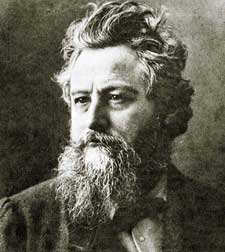
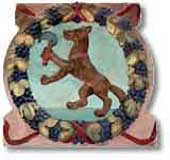
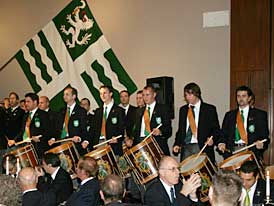



When my grandson, Tyler Hunt, were doing a painting together, Patrice Hanson, looked on with disgust. This goes back to our conversation at the ruins of Jack London’s Wolf House where I told my wife to be my families creative legacy was falling into the hands of outsiders the same way London’s legacy came to be owned by hostile outsiders. I told Patrice I am authoring a biography, and my rivals are inventing lies in their biogrphy of my famous sister, Rosamond. All of a sudden, Patrice says;
“Are you saying our daughter got all her talent from you?”
I got angry, for this woman, who had two sons by two fathers, did not allow me to be a father for sixteen years, and did her damnedest to have Heather believe she got all her gufts from her utterly un-gifted mother, who never was an artist, poet, or, writer. Patrice and her family are the people the Seer saw that come into my being and take – via my newborn daughter who Patrice put in the arms of famous parasite convicted of impersonating Bob Weir – twice!
Patrice had taken a lot of LSD and owns visions of he being the angelic earth-goddess mother who brings angels to earth via the birth-process. Children are her creations, examples of her divine work. The fathers of these children do not matter because they are earth-bound brutes, like her alcoholic father who caused her schizophrenic mother to jump off a cliff and killer herself. Patrice’s sister and brother have no children due to the extreme abuse in their home.
In Chicago, Patrice fell in love with a Black Panther, and had a son by him. This son named his son after Malcome X. Malcome is my grandson’s half-cousin. This panther died in a fire. He was close with Angela Davis who spread the message that back people should arm themselves, and overthrow white tyranny.
Patrice, and thus Heather, was not impressed with my genealogical study, because my tree is full of white people. However both were extremely interested in the world famous artist, Rosamond, and her success, because heather was destined to be famous one day, and give her mother a million dollars so alas she could live the life-style she deserves. As for me living thru my only child in a vicarious manner, and being inspired to paint and write by my child, this was frowned upon. However, Tom Snyder, the rival biographer, is more then welcome to paint a beautiful portrait of the Madonna and Child – minus the shit-seed of the junk-filled hell-fathers!
When I received my first (typed) letter from my newfound sixteen year old daughter, I took it to my friend, Ed Corbin, who mastered in Literature at Harvard, and was an editor at Double Day. Seconds after reading The Good News, Ed said;
“Your daughter did not write this letter.”
Ed employed his high education to explain the examples of third party removed. I was in shock when I reread MY letter, that was not really mine. This narcissistic piece of shit could not allow her Star Child to fully by my child – too! There was THEIR HIDDEN AGENDA to be fulfilled that I am not privy to. I will always be THE OUTSIDER. However, Divine Mother and Child have got to get in BOTH books, and get all the wealth the Rosamond Gallery holds for them, because, it is THEIR DESTINY to own this wealth – minus the gross jack-off earth father who is guided by his sick penis, only!
Having read Grimm’s I saw my daughter’s mother as a evil green witch lurking in the dark, stirring her enmeshed pot of lost identities. Only Witch Patrice gets to be a whole person, the complete package. Only Patrice is worthy to CONTROL ALL THE INFORMATION. Here is the real RIVAL AUTHOR! When Belle Burch pulled the same witchy transference on me, and when Witch Valkyrie threatened to destroy me, and see that I am harmed if I fight back, I had to consider the two of them were in it together. CONSPIRACY!
That Belle and Alley empowered themselves via LOST THROWAWAY CHILDREN, is also out of a Fairytale. Consider Peter Pan – and Dickens. These homeless people who need SLEEP, do not want to grow up. They did not want to obey their parents or clean their rooms. They just wanted to TAKE what belongs to others, and, have others TAKE care of them – because we all OWE THEM. They DESERVE what we got. WE don’t deserve what we got. THEY WILL HURT US!
For the last several days, reporters all over the world are openly discussing how Muslims in Europe are feeling DISINFRANCHISED, and thus will become RADICALIZED, get a weapon, and MURDER UNARMED PEOPLE. These parasitical cowards do not want to go up against ARMED PEOPLE. Why is that? They want to stop average people from enjoying what they have, what they worked for. They want people to be afraid and think of the TERRORISTS all the time, and what they don’t have. These are not Robin Hoods. These are dangerous people whose prophet and god does not make them happy, like the prophet and god of those who HAVE!
* * *
Both my father and my childhood friend, Bill, emulated the author Jack London, whose writing appeared in the same periodicals as my grandfather, Royal Rosamond. The rival authors did not know this. They did not know ANYTHING, yet, they elected themselves THE MORE DESERVED! My brother allowed the takers to come and take from the Creative Family Pile because he thinks very little of Artists and Poets. His main concern is ‘The Parasites of the World’. Almost everyone is a parasite, but Mark.
After Wolf House burned down, Jack and his wife struggled the keep ‘Beauty Ranch’ going. After Jack was dead, Charmain fought off the parasites who wanted to take Jack’s work that was in DEFAULT, and liquidate it. I had read plaques of this struggle. I was dismayed as I sat with Patrice and beheld the ruins of Wolf House and London’s Dream. I told Patrice how after Christine’s funeral, Stacey Pierrot got down on one knee in front of the Rosamond Gallery, took my mother’s hand, and said;
“Don’t let the Dream die!”
“It was not her Dream!” I told my fiancé, who looked distracted. I could not read what was going on her mind. I pressed her as we ate our packed lunch at a picnic table. This is when she accused me of excluding her CONTRIBUTIONS! I proposed to this mother of my daughter, who I wanted to own my name and not the name of a Infamous Imposter. I wanted them both to be in MY FAMILY TREE. What I didn’t understand, was, I was dealing with a out of control Narcissist, that had to have it all, and, I had come between her and her NARCISSTIC SUPPLY. In two months Patrice would disappear our child – with the help of all members of her family, who could care less about MY FAMILY TREE.
What I had done wrong was MAKE IT REAL. I WOKE Patrice from her fantastic dream story that she wove around Heather. She saw that I owned all THE REAL POWER, and thus needed the rival author fully in her camp. This is why she tried to convince me in a e-mail that two books would be better. Do you see it? This DEMON typed a letter to me and had my daughter apply her name. Peirrot petitioned the Probate Court for an Estate Seal so she could apply it to unsigned Rosamond lithographs, and give them the same worth as the signed work. This is right out of Big Eyes, that exposes the narcissistic personality disorder of Walter Keane.
http://echorecovery.blogspot.com/2013/08/tactics-narcissistic-personality-disorder-mother.html
The Rosemondts owned Wolf House in Brambant, and were part of a restoration of Frankish rule in theat area, which suggests they might be descended from Merovingians. One author connects them to the Knight Templars and the Holy Grail in a speculative manner. J.R. Tolkein was inspired by the book Wolfen written by the Pre-Raphaelite William Morris. In 1969 I emulated the Pre-Raphaelite style and philosophy that in turn inspired my late sister, Christine Rosamond Benton. We were the New Pre-Raphaelite Brother and Sister, as well as Brother and Sister in Alcoholics Anonymous, where we shared out stories. I told Patrice no outsider can tell OUR SOBER STORY. I told this mother that I wrote the executor and told him he can not sell our Program to others so they can realized a prophet. Patrice could not see herself, and our daughter, as an INSIDER, because they had come for THE FREE FOR ALL!
In Snyder’s book he repeats the secret of Rosamond’s success. Rosamond cut out images of models in fashion magazines, and projected them on a canvas – without the permission of the model. When I discovered this projector Christine asked me for help – because she did not feel like a real artist. I will ask Lara Roozemond for permission to use her photos, and if she will model for me. She might do this for free in order to enrich her portfolio.
As a real artist, and as a man, father, and grandfather, I have formed complex bonds with real beautiful women. Christine did not. I am no longer going to let vain and selfish women near me and my work. I don’t need the heartbreak, and, the dark image they give me.
Jon Presco
Copyright 2014


http://www.aa.org.au/members/anonymity.php
http://www.historieroermond.nl/afkomstiguitroermond/Afkomstig%20uit%20Roermond.pdf
“Traditionally, AA members have always taken care to preserve their anonymity at the “public” level: press, radio, television, and films.
In the early days of AA, when more stigma was attached to the term “alcoholic” than is the case today, this reluctance to be identified – and publicised – was easy to understand.
As the Fellowship of AA grew, the positive values of anonymity soon became apparent.
First, we know from experience that many problem drinkers might hesitate to turn to AA for help if they thought their problem might be discussed publicly, even inadvertently, by others. People who are new to AA should be able to seek help with complete assurance that their identities will not be disclosed to anyone outside the Fellowship.
Then, too, we believe that the concept of personal anonymity has a spiritual significance for us – that it discourages the drives for personal recognition, power, prestige, or profit that have caused difficulties in some societies. Much of our relative effectiveness in working with alcoholics might be impaired if we sought or accepted public recognition.
While each member of AA is free to make his or her own interpretations of AA tradition, no individual is ever recognised as a spokesperson for the Fellowship locally, nationally, or internationally. Each member speaks only for himself or herself.”
Charmian and Jack’s dream of parenthood never materialized. Charmian became pregnant twice. One child whom they named Joy survived only a few hours and the other child was lost due to a miscarriage.
After Jack’s death in 1916, Charmian committed herself to saving Beauty Ranch and promoting Jack’s legacy. She sold his writings and worked with the movie industry to convert Jack’s books into films. She travelled frequently to Europe to work with agents, publishers and translators. She became a well-known personality in her own right and never remarried.
Charmian died January 14, 1955 at the age of 83 and her ashes joined those of her beloved Jack under the rock on a little knoll in Jack London State Park. After her death, Irving Shepard, her heir, facilitated Charmian’s wishes to donate her House of Happy Walls and 39 acres to the State of California. Her wishes were fulfilled in October of 1960 when Jack London State Park was officially opened to the public.
The Wolf House
“Jack and his second wife Charmian’s dream home was planned even before their marriage. Actual work on it began April 1911. Albert Farr of San Francisco was the architect who transferred Jack’s ideas into blueprints. For earthquake protection, the building was put on a huge floating slab large enough to support a forty-story building. Redwood trees, fully clothed in their own bark, deep chocolate-maroon volcanic rocks, blue slate, boulders and cement were chosen for primary building materials. The roof was of Spanish tile and came from the N. Clark and Sons Pottery, built on the old Davenport place in Alameda. Large redwood trees, with the bark still intact, formed the carriage entrance, the pergolas, and porches. The rafters were of rough-hewn, natural logs. Tree trunks in the gables and balconies were interlaced with fruit twigs for a beautiful effect.”
“Wolf House was not a castle in any sense of the term, though Jack and others referred to it as that. It was big, unpretentious, open, natural, and inviting, just like its builder. It was designed as a busy author’s workshop, and as a home big enough for the many needs of the Londons, and for the entertainment of their friends.
The Wolfswinkelse Water Mill was a watermill on the Dommel. The watermill is located in the municipality of Sint-Oedenrode Breugel Nijnselbetween and. This mill Shop mill may have ever known.
“Erhart de Rougemont who bought in 1495 “the house called Rebleuten-Zunft in Basle in the Freistrasse.’
Peter Rosemond had seen in print the letters from Erasmus to Gotschalk Rosemondt. He noticed that a seal used by a Rosemont in Holland, bearing a jumping fox, was like an emblem he had noticed in a wall of the house Rebleuten-Zunft in Basle. This seal
dated back to 1430,
This James (or Jacob, for these names were once interchangeable) was the son of Hans Ulrich
Rosemond, born 1623, a weaver; who was a son of Hans, a weaver, born
1581; who was a son of Fred Rosemond, born 1552, a weaver, member of
town council and a local captain; who was the son of another Hans
whose date of birth is not known, but he too, was a weaver and became
a citizen of Basle in 1534. His father was Erhart de Rougemont who
bought in 1495 “the house called Rebleuten-Zunft in Basle in the
Freistrasse.’ Peter Rosemond further reported information from the
Records Office in Basle that “before Basle the family resided in
Holland up to 1338, and it is said they descended from the estate
Rosemont, near Belfort, in France, where also the village Rougemont
is found.” A family coat-of-arms was registered in Basle about 1537
when the first Hans became a resident there. A reproduction of this
coat-of-arms in the writer’s possession shows a weaver’s crook
conspicuously, and it will be remembered that in Ireland our people
were linen weavers and farmers, and that Edward, the elder, was a
weaver in this country. Peter Rosemond had seen in print the letters
from Erasmus to Gotschalk Rosemondt. He noticed that a seal used by a
Rosemont in Holland, bearing a jumping fox, was like an emblem he had
noticed in a wall of the house Rebleuten-Zunft in Basle. This seal
dated back to 1430, whereas the coat-of-arms above mentioned dates
from 1534, it seems. Peter Rosemond died September 22, 1930. This is
but a sketch of what he wrote.”
In the name means Wolfswinkel Shop an angle. The element can be in multiple ways, however, Wolf explained. Many think it first to the animal name, but it can also save on a field curvature . That seems like a meaningful declaration because such terrain shape in the environment explicitly to designate falls (namely a strikingly high steep banks along the Dommel, half a kilometre to the North).
[Edit] History
[Edit] Glory Wolfswinkel until 1604
The mill was around 1200 by Duke Henry I of Brabant donated to the Priory of Postel. Later it became a little glory, consisting of a omgrachte hofstede (the Water hoof), a farm and water mill. This area was by the Ducal couple Johanna van Brabant and Wenceslas I of Luxembourg in 1381 in leen issued to the nobleman Edmund d’Aquis. There would then also a padlock are built. The oldest known occupant, after which her son would Agnes van Wolfswinkel Colen of Dijnter has inherited the property, after which the owners were Emont of Geerke and Dijnter. In 1450 the glory was in possession of the family of Rosemont, and afterwards the families Coensborgh and Molenpas. The lock was already gone. In the 15th and 16th century followed by the families mentioned families, The Huyoel, Of Broekhoven, Bogaers Cocq and Thielemans.
[Edit] From 1604 to 1795
The mill was In 1604 , los of the estate, as a separate fief sold to Coenraedt Jan Adriaens. In 1628 the mill was in the possession of Jhr. Jeger 1650 a oil mill with the original corn mill had built. We Around 1720 was the mill in the possession of Lord Lambert, count of Berlo, and after his death the mill was sold to Johan Carel de Jeger, who was Lord of Eckart .
During the French period, at the end of the 18th century, the mill was burned by the English and German troops, in order in this way, the English army, that was contracted on the Nistelrooise Heide, to warn of the approaching French. The remnants were then sold in 1795 to Widow of schalkwijk, which the mill Raon 50 metres upstream left a rebuild.
[Edit] From 1795 to the present
After the rebuilding the mill has known many owners. She was under during the 19th century more used as the volmolen by Geldropse and the Tilburg textile manufacturers. Although the mill was still in operation in 1878 , she hit soon afterwards in decline. In 1928 the Dommel and fell the lock in the water mill was sold to waterboard De Dommel. After 1945 the watermill was demolished, despite efforts to preserve it.
Nowadays rest on this picturesque place only the Mill House. In addition, reminds the Water farm to the former glory. Furthermore, reminds a small monumentje to the water mill, as well as the path that leads there, which still bears the name Watermolen Street . The cycle path network along The Peel performs there.
Gerlach de Roovere, Knight, Lord of Waalwijk, Drunen, Vlijmen, “Honsoirde” (Onsenoort) Rixtel, Someren, Lierop and Wets. According to a manuscript of the genealogy of 1266 is Gerlach Arnold Son de Roovere (genus of Red) married Oda, daughter of Jan van Megen. One of their many children was Willem de Roovere.
The Brabantse noble genera that the 3 are all descendants of the mill irons, counts of Red. These old genera are named after the name of villages, Hamlets, neighbourhoods or estates under the old Taxandrie such as Asdonck, Stackenburgh, Van der van Vlierden, van Lierop, of Vladeracken, of, of, of Hove, Hersel, Breugel of Wette, Rinckveld, van Lieshout, of IJllingen, of veenhuizen, van den, van Wolfswinkel, Bolck of Broekhoven. But also Straeten, Kuysten, van Loon, of Orthen, van Mierlo, at Heerenhoven, of the fields, van den Heuvel and to d Boirschot ´ Erp.
When one wants to demonstrate that it has the right to a particular good or right, we need evidence. If they are missing, one can resort to falsifying or fabricating evidence itself that. Forgery is, however, not something today or yesterday. Certainly in times, which by war or fire more often than now, as in the middle ages pieces were lost, grabbed one to this medium.
We see, therefore, that ordinary people, noble families but also monasteries and abbeys not schroomden for den day to come up with the finest “evidence” of own fabrications. Such a collection of false or falsified documents can put a contemporary historian on the wrong leg and that is done repeatedly. The medieval family Stakenborch is an eloquent example. Purpose of the following is not to write a history of this interesting and for Lierop, Asten and Someren extremely important family, but to an old misunderstanding about to eliminate her.
Historical is of the family of Stakenborch the following known with certainty. Circa 1350 was Willem van Someren Stakenborch substantial man in inter alia, Asten and Lierop. He and his family owned, as owner or tenant, as many real estate throughout Brabant, including the good Vladeracken or Vlerken under Someren. William was also lessee of important goods of the Priory of Postel, namely the Windmill in Someren and water mill of Strip donk under Lierop. A mill was a huge source of income and Willem van Stakenborch and his brothers Henry I, Jan and Mathijs also to great success and brought it great prestige. Henry was even prior or prosiver (head) of the godshuis in Postel. Because this monastery with financial problems faced, borrowed it from the Stakenborch family of considerable sums of money. Postel gave them tithes and goods as collateral. For any goods it went, evidenced by a document from 1401. It says that Henry II of Stakenborch, son of William, inherited from his father all the rights on the goods pledged by the Priory of Postel to William, namely four farms in Someren, the tithes and the Windmill van Someren and goods Moorsel, Dot donk and Lierop.
In addition, did Henry I of Stakenborch, prior of Postel, some donations to the monastery. However, when he died in or before 1359 there arose a conflict. The only remaining brother, Willem, apparently, found that he was disadvantaged by Hendriks donations. Recalling also the large debts which Postel had to the family. There was, however, a referee and enabled 1359 legden Willem van Stakenborch on 10 January and the Priory of Postel in their dispute. Mathijs van Asten ceased In 1364 of Boescot, also of William of Stakenborch, for its part, intensify the process nephews against the then prior of Postel.
The descendants of the Brothers Of Stakenborch however showed sit at. Because according to them had not repaid the loan Postel and they therefore still entitled to the pledged goods, flared again in 1426 the fight in all vehemence. Jan van Stakenborch meeting and threatened to strip the possessions of the monastery in Postel even fire. The Duke of Brabant issued an arrest warrant against him and Jan had to leave the country. Thirty years later, in 1456, it came to a process, when John’s heir, weather of a claim made on all Mathijs Bois shot, Someren, tithing, the Windmill to van Someren in Someren and the mill law and four hooves to Someren Lierop. He did this on the basis of old usage rights, arising from the pecuniary obligations (debts) which Postel had towards the family. Mathijs claimed goods and rights that were around 1350 by the Priory of pledged to his ancestor William of Postel Stakenborch.
The Priory had been clean enough of Postel. Around 1360 the had acknowledged that all goods and rights of Stakenborchs still in Someren Postel were, but one nutrok and Lierop this fact again in doubt! The monks therefore decided to manufacture a number of effective evidence. A cumbersome procedure, but not directly on the basis of real instruments would always weather can lead to evidentiary again in doubt pull of the ownership rights of Priory Postel. Therefore the monks arrived in 1456 up with three instruments from 1243, 1266 and false 1311. These were to prove that the early Stakenborchs Of all their rights on tithes, a mill and four farms in Someren and the mill law in Lierop Postel to the monastery had donated and that they therefore had no rights more on. In the three forged charters is a very sex to emerge of the aforementioned brothers William, Henry trooped, Jan and Mathijs. Apparently it was the family of Stakenborch, formerly leaseholders of the monastery, in the fifteenth century the Premonstratensians grown above the head, such that even the clergy saw no other way out than Postel more counterfeiting. In the pedigree of the family of Stakenborch we come in the forged charters as forefathers souped-up Gerlach and Willem de Rover often against. It is quite possible that the fact of them descended but the false Stakenborchs Of instruments should not serve as proof. Also, Gerlach and Willem instruments in the “Lord of Stakenborch in Someren” and that is in the real pieces never the case.
The Stakenborchs Of their pretensions towards Postel gave after 1456 on but the story is not yet out. A smart descendant has the counterfeits of Postel in the seventeenth century once used and even supplemented with still a forgery. In 1656 namely claimed French of Bois shot of noble descent. He wanted to prove this by pointing to his descent from the chivalrous Of the noble Stakenborchs and the robbers. But he had not enough to the false Postelse charters. That is why a Charter, which was produced from 1308, on the one hand, the relationship between Of Bois shot and Of the Lords of Stakenborch and of Stakenborchs to Asten and Lierop and escharen were promoted. Names of actual gentlemen of Asten (and Lierop?), members of the family of Cuijk, were incorporated in the pedigree. All this was, of course, completely false, but like Postel in 1456, reached the forger also this time the desired result: his claims to nobility was recognized.
Later chroniclers made the matter still further complicated by the pedigree to fill in fanciful. Result, interesting but volsterkt unhistorical pedigrees. So Stakenborchs on the basis of the counterfeits were Of considerable leaseholders in Someren, Lierop and upgraded from Asten to gentlemen of Asten and Lierop, which they never been. Coppens and Schutjes know even to report that Henry of Stakenborch, before if Postel “Norbertijner the white habit” provisor, the Lordships Lierop, Stakenborch, Someren, Asten and escharen sold to the Duke of Brabant. It has therefore thought that his municipality weapon, the three mill Lierop irons, to the identical coat of arms of this family. The Priory would have this weapon also postel inherited from Henry of Stakenborch, which was around 1350 prior Postel. Whom the weapon is now the question of whom took over to the chicken and the egg. The most obvious, however, that it is and that it is both the oldest Postelse weapon by Lierop if by Stakenborchs is inherited.
NUTS
Source: “Lierop ‘n image of a village”
1. the following is almost entirely based on the diplomatic considerations of H.P.H. in the instruments at the Camps Camps on ONB, ONB, nr 199 d.d. p. 277; No. 305 pp. 917-920 dated; No. 863 dated 1052-1055 pp.
2. a. j. stakenburg Teychiné, “The Brabantse genus stakenburg in the XIVe – XVIIIth century”, Yearbook of the Centraal Bureau voor Genealogie 15 (1961) 118-146, m.n. 120-121 (= idem, the family stakenburg (Rotterdam1961). See for his further studies on this family the footnotes 4 and 7
3. Henry amused in 1401 these goods in turn to his sister Margriet (the archives of Th.L.Welvaarts, Zomeren Postel’s Abbey (Helmond/Turnhout 1892) 65-66)
4. Notarized deed dated 1364 July 20 (RANB, old inv.nr.Aanwinsten 1885/27bis/g, temporarily: dossier Church Asten deed g), mentioned in Camps, ONB p. 1054; Teychiné stakenburg facsmile: A.J., the oldest generations der family stakenburg (Rotterdam 1980) 15.
5. In the beginning of the 17th century one manufactured a false deed in Postel, yet supposedly from the year 1357, which a defence work recorded against the so-called claims of Willem van Lierop and Stakenborch on the mills of Someren (Someren 9bis Abbey-archive Postel, charters; see Camps, ONB, p. 1054 and n. 1)
6. J.A. Coppens, New description of the Diocese of ‘s-Hertogenbosch in response to the Meijerijsch in his book of a. Kath Pleading van Gils, (4 din; “s-Hertogenbosch 1840-1844) III. 1 302-303: Schutjes, history of the Diocese of ‘s-Hertogenbosch l.h.c., (5din; St. Michiels-Gestel 1870-1876) III, 144; IV, 669; A.F.O. Sasse van Ysselt, of “the glory Asten”, Taxandria 22 (1915) 3-9, 65-73, 121-129.
7. Unfortunately is also the serious researcher of the family of Teychiné, Stakenborch, A.J. stakenburg in this trap cases. This is the case in his study from 1961, “The Brabantse genus stakenburg”, pp. 118-122, in which he mainly based on a manuscript of the nineteenth-century Archivist of Postel, Th.L.Welvaarts, “the family of Stakenborch 1343-1626 to the archives of the Abbey of Postel” still vooert “Willem de Rovere in 1980 he Stakenborch, Lord of Asten and escharen (and Lierop?)”, which therefore never existed, as ancestor of the genus (see Teychiné, “the oldest generations stakenburg”, 5; and idem “The Brabantse genus stakenburg” complements the genealogy, the Brabant Lion 31 (1982) 85-86
8. see e.g. f. Prince, the onze-Lieve-Vrouwe-Norbertine Postel Abbey der to (Antwerp 1935) 46-47.
Here is a chapter from my Grandfather’s story, whom I never met. I
will soon be leaving to see my Grandson, Tyler, Royal’s Great
Grandson. I will be bringing The Grandfather’s with me so they may
adore Heather’s beautiful son through my eyes.
http://rougeknights.blogspot.com
Monica de Mornay De La Croix Rose
Posted on May 9, 2018 by Royal Rosamond Press
It was indeed Daisy who first wore the Dali inspired “Shoe Hat”, which Dali sketched for Elsa in 1937.
Bond and Fellowes
A Ian Fleming Revival
by
Jon Presco
Copyright 2018
Chapter One
‘The Deal of the Art’
Monica de Mornay Del La Croix watched the rise of her son in the Admiralty with amusement. But, now that the war was over, anyone who was somebody, took a keen interest in the art collection of Hitler’s top brass. The looted art was hands off, but, there was the art that belonged to the aristocracy, that was considered war booty. Henriech Himmler allegedly took it upon himself to rescue the art treasures from the stately homes in Berlin before the advance of the Russians. This art was never found. Then there were Berlin’s museums. Curators moved their art treasures the day after the first allied bombing. All of this was considered war booty, and up for grabs.
James had turned down his mother’s job offer for a position at Loyd’s of London, and Sothebys.
“Get close to the de Rougemonts. They are locking up the world!” Monica said as upon a stage, then came to hover over her son who was in his desk drawer looking for surviving bottle scotch whiskey.
She then tried to hook her son up with Hoaward Young, the art dealer, who was purchasing European Art for wealthy American millionairs.
“I don’t know a thing about art!” James announced proudly, hoping this would put an end his mother’s latest ambition for him.
“Its not a matter of what you know, but who you know! Daisy Fellowes has the hots for you and is between husbands. She is related to Winston Churchill. If you allow her to bed you, she will move you up through the ranks! Everyone in the Royal Navy is after her.”
“Mother! Are you pimping me out?”
“Yes! You are giving it away – for free! How many artists friends do you know, who act like whores around their patrons? Daisy can help you round them up and put them in the Bond & Fellowes stable.”
“Hmm! Bond & Fellowes Art Gallery of London. It has a substantial ring to it. Why not throw in the latest fashions?”
“I don’t trust you will get anything done with all those young models around.”
Monica de Mornay watched her son take in the whole hook, with his mother’s disapproval of him being a womanizer – and a cad! She employed the Rebel Child gambit on him, that she knew would not last forever. Her son was surrounded by those Eaton chaps that were taught how to be clever, and nothing more. They were not ready for the Blitzkrieg. They thought it was going to be another long drawn out chess game. They did not expect their opponent to lunge across the board and plant a dagger in their gut.
The next call would be to her calling card company. She knew her clever son was into giving his name with aplomb;
“Bond. James Bond. Here’ my card!”
Bond & Fellowes
Daisy was now considered the Muse of the Century. Where there is a muse, look for an artist close by. John Singer Sargent did a portrait of Daisy, which got the attention of his rival, Augustus John, who lured the famous actress, Tallulah Bankhead, to his home in that would soon become the home of Francis Taylor. His mother, Elizabeth Rosemond Taylor was there, as was Elizabeth’s sister, Mable Rosemond Young, who was married to Art Dealer, Howard Young, who was a good friend of General Eisenhower. They played a lot poker, with other brass included high ranking allied brass. Monica played her calling card on the Rosemond sister from America.
“Do you know Baron John Rose of Canada? I am kin to all the Rose Barons.”
Monica instantly regretted her name dropping. The look these American women gave her was a put down she had never experienced. She apologized before she heard;
“We grew up with a work horse named Rose.”
“And, a chicken!”
The rumor has it The Boys played for Art, art that was turned over to the allied commanders by their troops. After ascertaining it was German art, Howard arranged for buyers. This was all under the table. This art seeded American companies that took advantage of the technology that the war produced. Several Airlines took off with art belonging to families with Von in their name. This is…….The Untold Renaissance!
Everyone got it, if those Sad Sacks from the Ozarks found out they were being aced out, there would be another American Revolution. The poor hate a rigged game. Booty will be Booty. That’s how it goes, the wages of war.
When Daisy accompanied Tallulah to her first sitting with John, she was introduced to Taylor’s two children. She was struck my the color of their eyes. All the Rosemond women had these purple-blue eyes. They wanted to meet the movie star, who looked perturbed, as did Augustus. She didn’t get what he wanted – from her! Here was Hollywood Royalty, and she looked like she was heading to the barn to milk the cows. She didn’t have – IT!
“And, what are you going to be when you grow up?” Daisy asked Elizabeth.
“I’m going to be a horse trainer. Do you want see my pony uncle Howard gave me?”
Jon Presco
Copyright 2018
| Evelyn Beatrice Fleming (St. Croix Rose) | |
| Also Known As: | “Evelyn St. Croix Fleming” |
| Birthdate: | 1885 (79) |
| Death: | July 27, 1964 (79) |
| Immediate Family: | Daughter of George Alfred St. Croix Rose and Beatrice St. Croix Rose Wife of Valentine Fleming Mother of Amaryllis Marie-Louise Fleming; Peter Fleming; Ian Fleming and Michael Valentine Paul Fleming Sister of Major Harcourt George Sainte Croix Rose; Kathleen Mary Sainte Croix Rose and Ivor Sainte Croix Rose |
|---|
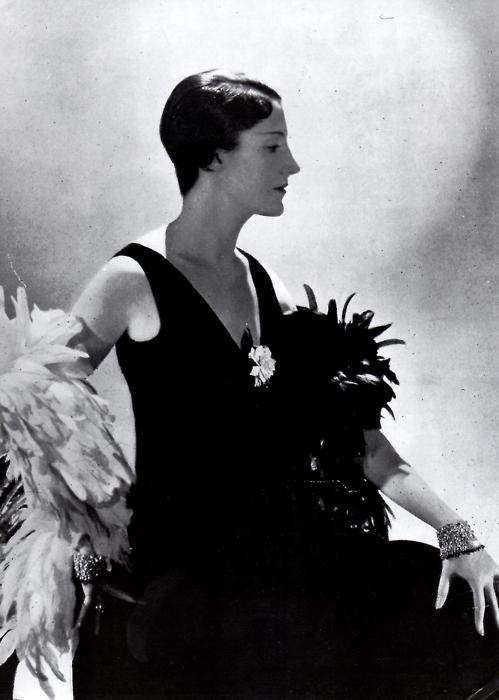



https://en.wikipedia.org/wiki/Daisy_Fellowes
https://en.wikipedia.org/wiki/Sotheby%27s
Monica Delacroix Bond
Posted on April 26, 2018by Royal Rosamond Press



Three hours ago, I discovered James Bond’s mother is named ‘Monique Delacroix Bond’. Ian Flemings mother is Evelyn Beatrice Saint Croix Rose. Delacroix means “of the cross”. Add the Rose and you ‘The Rose of the Cross’. How about The Order of the Rose Croix? The Rose line of Fleming via his mother. I have chosen this image to be Bond’s mother who was born in Switzerland.
“Sir John Rose, 1st Baronet
There have been four baronetcies created for persons with the surname Rose, all in the Baronetage of the United Kingdom. Three of the creations are extant as of 2010.
My grandfather, Royal Rosamond, taught Earl Stanley Gardener how to write, and camped on the Channel Islands with Dashiel Hammet, and other Black Mask mystery writers – before Ian Fleming, and Dan Brown became writers. I have shown you the real ROSE LINE OF THE CROSS. I can deliver this anyway I want. No one has made the Monica connection to Bond’s mother, but Ian, who goes undercovear at the College of Arms – as a genealogist! This is pre-Dan Brown. Fleming and Brown top the top money-makers.
As Fiction
As a Historic Romantic
As Pseudo Religious Myth
A Mystery
I find it very interesting that Rear Admiral Ronny Jackson is acting Bondish, and like the real Fleming. Ronny wrecked a car at a Secret Service bask. I am in the cat bird’s seat! James was born in the Canton of Vaud where Chateau Rougemont is located. James was born in Austria.
I am kin to Elizabeth Rosamond Taylor and Carrie Fisher. The Rosamond name has been traced to Rougemont in the Alsace. The de Bar family are kin. Liz is kin to Ian Fleming through the Getty family.
http://www.angelfire.com/realm/gotha/gotha/bar.html
Notice the spelling of Rougemont – Rosemont. Johanna ‘Dame de Rosemont’ married Duke Albrecht von Hapsburg. From them most of the Hapsburgs descend.
Johanna Gfn von Pfirt, 1347 Dame de Rosemont, de Sermagny, de Chaux, de la Chapelle, du Puits, de Giromagy, de Viscemont, de Rougegoutte, etc (1300-Vienna 15 Jan 1352; bur Gaming); m.13 Feb 1324 Duke Albrecht II of Austria (d.1358)
It is 1:47 A.M. PST. I am going to retire. Tomorrow, I will awake as the Latest Fleming Revivalist and contact GLIDROSE, a name that combines John Gliddon, with Norman Rose……………..a Rose Line! I have raised Monica Delacroix – from the dead! My mother was born Rosemary Rita Rosamond, to Mary Magdalene, and Royal Rosamond.
I will no longer be using Lara Roozemond as my Muse for my Bond revival.
On this day, April 26, I found ‘Royal Rosamond Fashion’ a fashion magazine. I want to attract Top Models from around the world. Why not……The Victoria Bond Look?
Jon Presco
Copyright 2018

Ian Fleming Publications is the production company formerly known as both Glidrose Productions Limited and Glidrose Publications Limited, named after its founders John Gliddon and Norman Rose. In 1952, author Ian Fleming bought it after completing his first James Bond novel, Casino Royale; he assigned most of his rights in Casino Royale, and the works which followed it to Glidrose.
https://en.wikipedia.org/wiki/Ian_Fleming_Publications
http://jamesbond.wikia.com/wiki/Ian_Fleming_Publications
Monique Delacroix Bond
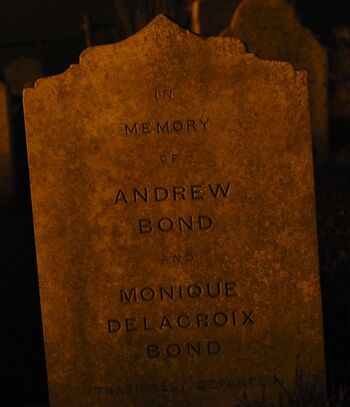
Monique Delacroix-Bond
Character information
Died
You Only Live Twice: 1931
Carte Blanche: 1990
French Alps
Relatives
James Bond(Son),
Andrew Bond(Husband),
Charmain Bond(Sister-in-law)
Nationality
Swiss
Occupation
Photojournalist
Spy
Status
Deceased
Monique Bond is the mother of James Bond and the spouse of Andrew Bond. Like her husband, the character has only a brief mention in Fleming’s penultimate novel, You Only Live Twice. Although alluded to in 1995’s GoldenEye and 2012’s Skyfall, she has never been portrayed in film.

| Ian Lancaster Fleming | |
| Birthdate: | May 28, 1908 (56) |
| Birthplace: | Mayfair, London, Greater London, England, United Kingdom |
| Death: | August 12, 1964 (56) Canterbury, Kent, England, United Kingdom (Heart attack) |
| Place of Burial: | St Andrew’s Churchyard, Sevenhampton, Wiltshire, England, United Kingdom |
|---|---|
| Immediate Family: | Son of Valentine Fleming and Evelyn Beatrice Saint Croix Rose Husband of Anne Geraldine Mary Fleming Father of Caspar Robert Fleming Brother of Peter Fleming and Michael Valentine Paul Fleming Half brother of Amaryllis Marie-Louise Fleming and Major Richard Evelyn Fleming |
| Occupation: |
Contents
[show]
Overview
It was not until the penultimate novel, You Only Live Twice, that Ian Fleming gave Bond a sense of family background, using a fictional obituary, purportedly from The Times. The book was the first to be written after the release of Dr. No in cinemas and Sean Connery’s depiction of Bond affected Fleming’s interpretation of the character, to give Bond both a sense of humour and Scottish antecedents that were not present in the previous stories. The novel reveals Bond is the son of a Scottish father, Andrew Bond, of Glencoe, and a Swiss mother, Monique Delacroix, of the Canton de Vaud. When his parents are killed in a tragic mountain climbing accident in the Aiguilles Rouges near Chamonix, eleven-year-old James is orphaned.
Novel biography
Double or Die
Two years after her demise, Monique’s son James had been poisoned with lethal amounts of Gin, and passed out on a boat, where he remembered being taught to sail by his father, and accidentally smashed his fingers as they docked due to his hand having been resting on the edge of the boat, which Andrew had expressly told him not to do. James howled with pain, and Monique quickly embraced him and began to dote. James felt babied and uncomfortable, but as he lay poisoned he reflected that while he had resented his mother’s affection at the time, he would have liked to feel the sense of security she brought him again.
Carte Blanche
In Jeffery Deaver‘s continuity, it is revealed that, while she pretended to be a freelance photojournalist, Monique was really a freelance Spy Hunter for MI6. Monique was assassinated in the Alps by Russian operatives in a Soviet “Steel Cartridge” operation to take out the spy who had come too close to exposing several Russian agents, and took out her husband in the process.
The resulting police investigation resulted in the operation being declared as a tragic accident, they did find a chrome cartridge of bullets in the snowdrift that appeared to kill them. While its presence was never explained, It was left by the Soviet operative as a warning to the SIS.
Film biography
Alec Trevelyan reminds James how his parents died in a climbing accident.
She resided in Skyfall Lodge before her death alongside Andrew, leaving James distraught. After that, his primary caretaker became Kincade, the gamekeeper of Skyfall Lodge. They were buried nearby in the graveyard of the estate’s chapel. When Andrew and Monique are mentioned by M James does not like to talk about his roots or his parents.
Anyone who tries to tell me that genealogy isn’t cool gets referred to the 1969 James Bond film, On Her Majesty’s Secret Service, staring George Lazenby. In the film, James Bond goes undercover as a genealogist to research a lineage question surrounding a Bond villain’s claims to a noble title.
There are a number of things James Bond, the genealogist, does right and at least one thing that’s definitely wrong. Here are a few examples of Bond’s excellent genealogical handiwork:
- Bond discusses conducting what professional genealogists may refer to as a “reasonably exhaustive search” using original Church records in Switzerland and other resources.
- Bond consults heraldry books referencing the noble family in question.
- He interviews his villain client about his alleged noble lineage and family.
- It’s clear that Bond had done some advanced preparation before the client meeting. He is already familiar with the noble family the client would like to be connect to – right down to the shape of family’s earlobes!
- Bond makes it clear that thorough evaluation of all the sources and information is recommended before arriving at a conclusion about ancestral ties. Something we all should live by (or live twice by in James Bond’s case).
As far as genealogy no-nos, I suppose he wouldn’t be James Bond if he didn’t break a few rules. It can safely be said that no genealogist worth their salt would recommend “fraternizing” with ladies (or gentlemen) while conducting onsite genealogical research, especially at a client’s place of residence. But since this is clearly the norm for Bond, maybe we can grant him a little artistic license.
The bottom line is: if genealogy is cool enough for James Bond, it’s certainly cool enough for me!
Commander James Bond, CMG, RNVR, was born in 1924 in either Wattenscheid, Germany or Vienna, Austria to Andrew Bond and Monique Delacroix. When James was eight both his parents were killed in an accident and he was placed under the care of an aunt.
He studied at Eton College, Fettes College, University of Geneva and the University of Cambridge. He is fluent in many languages including Russian and Japanese.
Bond therefore goes undercover as a representative from the College of Arms to supposedly help Blofeld validate his claim to the title of Count. The pretense used to arrange his meeting with Blofeld would be that the representative, a Sir Hilary Bray, needed visual confirmation of this physical characteristic in Blofeld in order for the research to continue. Essentially, Bond appeals to Blofeld’s vanity, which is a theme that continues throughout the book. The object is to convince Blofeld to leave his hideout in the Swiss Alps on the pretense of validating his claim to a noble title so that he can be apprehended somewhere where the British Secret Service could get to him.
Ronny Lynn Jackson (born May 4, 1967) is an American physician, Physician to the President, and United States Navy rear admiral, who has been nominated as the Secretary of the Department of Veterans Affairs. First appointed to the role of Physician to the President on July 25, 2013 by Barack Obama, he was retained by Donald Trump after his election in 2016.[1]
https://en.wikipedia.org/wiki/Canton_of_Vaud
https://en.wikipedia.org/wiki/Aiguilles_Rouges
http://www.originsitaly.com/james-bond-genealogist-on-her-majestys-secret-service-genealogy/
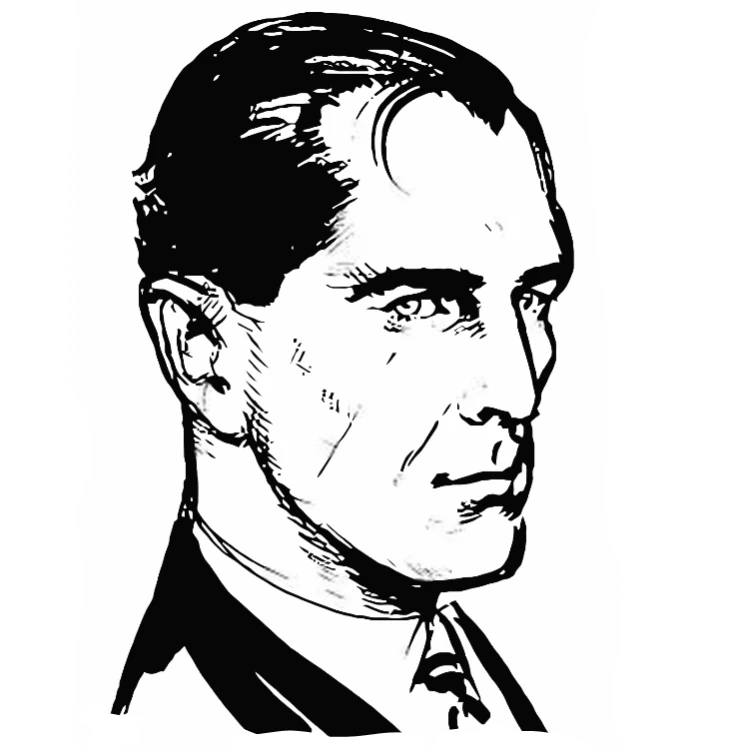
James Bond
Character information
Alias(es)
007
Title/rank
Commander, Royal Navy
Born
11 November 1920 / 21
(unconfirmed)
Hair color
Black hair
Eye color
Blue-grey
Height
6’0″
Weight
167 lb
Relatives
Andrew Bond(father)
Monique Delacroix Bond(mother)
Tracy Bond(wife)
Charmain Bond(paternal aunt)
James Suzuki(son)
Max Bond (paternal uncle)
Victor Delacroix (maternal uncle)
Nationality
Occupation
Senior Operational Officer,
MI6 (’00’ Branch)
Affiliation
Secret Intelligence Service (S.I.S.) formerly known as Military Intelligence – Section 6 (M.I. 6)
Rose baronets
From Wikipedia, the free encyclopediaJump to: navigation, search

Sir John Rose, 1st Baronet
There have been four baronetcies created for persons with the surname Rose, all in the Baronetage of the United Kingdom. Three of the creations are extant as of 2010.
The Rose Baronetcy, of Montreal in the Dominion of Canada, was created in the Baronetage of the United Kingdom on 9 September 1872 for the Canadian politician John Rose. On the death of the fourth Baronet in 1979 the title was passed on to Sir Julian Rose, 4th Baronet, of Hardwick House (see below).
The Rose Baronetcy, of Rayners in the County of Buckingham, was created in the Baronetage of the United Kingdom on 14 May 1874 for Philip Rose, founder of the Brompton Hospital for Consumption and legal adviser to the Conservative Party.
The Rose Baronetcy, of Hardwick House in Whitchurch in the County of Oxford, was created in the Baronetage of the United Kingdom on 19 July 1909 for the businessman and Liberal politician Charles Rose. He was the second son of the first Baronet of the 1872 creation. The fourth Baronet also inherited the Rose Baronetcy on Montreal in 1979 (see above).
The Rose Baronetcy, of Leith in the County of the City of Edinburgh, was created in the Baronetage of the United Kingdom on 2 July 1935 for the Scottish public servant Arthur Rose, Commissioner for Special Areas for Scotland under the Special Areas Act 1934[1]. The title became extinct on the death of the second Baronet in 1976.
Contents
[hide]
- 1 Rose baronets, of Montreal (1872)
- 2 Rose baronets, of Rayners (1874)
- 3 Rose baronets, of Hardwick House (1909)
- 4 Rose baronets, of Leith (1935)
- 5 Notes
- 6 References
Rose baronets, of Montreal (1872)[edit]
- Sir John Rose, 1st Baronet (1820–1888)
- Sir William Rose, 2nd Baronet (1846–1902)
- Sir Cyril Stanley Rose, 3rd Baronet (1874–1915)
- Sir Francis Cyril Rose, 4th Baronet (1909–1979)
- Sir Julian Day Rose, 5th Baronet (born 1947) (had already succeeded as fourth Baronet of Hardwick House; see below)
The Heir Apparent to both the Rose Baronetcy of Montreal and the Rose Baronetcy of Hardwick House is Lawrence Michael Rose (born 1986), only son of the current baronet.
Rose baronets, of Rayners (1874)[edit]
- Sir Philip Rose, 1st Baronet (1816–1883)
- Sir Philip Frederick Rose, 2nd Baronet (1843–1919)
- Sir Philip Humphrey Vivian Rose, 3rd Baronet (1903–1982)
- Sir David Lancaster Rose, 4th Baronet (born 1934)
Rose baronets, of Hardwick House (1909)[edit]

Grave of Sir Frank Stanley Rose in Zandvoorde Churchyard
- Sir Charles Day Rose, 1st Baronet (1847–1913)
- Sir Frank Stanley Rose, 2nd Baronet (1877–1914)
- Sir Charles Henry Rose, 3rd Baronet (1912–1966)
- Sir Julian Day Rose, 4th Baronet (born 1947) (also succeeded as fifth Baronet of Montreal in 1979; see above)
The Heir Apparent to both the Rose Baronetcy of Montreal and the Rose Baronetcy of Hardwick House is Lawrence Michael Rose (born 1986), only son of the current Baronet.
Rose baronets, of Leith (1935)[edit]
- Sir (Hugh) Arthur Rose, 1st Baronet (1875–1937)
- Sir Hugh Rose, 2nd Baronet (1907–1976)
esty’s Service

7 June 2017
Artistic Line of the Rosemond Sisters
Posted on November 26, 2013by Royal Rosamond Press
It is extremely rare that two women who bare the name Rosamond and Rosemond on their birth certificate would become big players in the Art World, along with family members. Christine Rosamond Benton, and Elizabeth Rosemond Taylor, are distant cousins who share the same great grandfather, James Rosamond.
What is profound two Rosemond sisters married Liz’s grandfather, and uncle, both who were famous art dealers. Liz’s uncle, Francis Marion Taylor, married Elizabeth Mary Rosemond. Francis had a gallery in the Elysee Chateau, where many Hollywood Stars resided, and later in the Beverley Hills Hotel, where Marilyn Monroe lived. Howard had a gallery in the Pierre Hotel in New York, and was a good friend of President Dwight Eisenhower.
Christine Rosamond Benton had two galleries in Carmel, and was a partner with an advisor for the Getty family who were friends of the artist, Garth Benton, the cousin of the artist, Thomas Hart Benton. Garth is the daughter of my artistic niece, Drew Benton. Jessie and Susan Benton, had salons in San Francisco and Paris. We are looking at a Artistic Dynasty.
Also of interest, there is a Francis Marion Rosamond who was named after Francis Marion, the ‘Swamp Fox’.
“My grandfather’s cousin, Leonard “Lenn” Duckworth married Jessie N. Rosemond, daughter of Morton M. Rosemond aka Moses Rosemond and Martha Lakes/Lokes, on 28 Dec 1891 in Sangamon Co., IL. Jessie’s siblings were Elizabeth M. Rosemond b. abt 1868, who married Frank Taylor 27 Feb 1890 in Sangamon Co., Frank Rosemond b. abt 1873, OH, and Mabel Rosemond, b. abt. 1878, who married S. Howard Young 13 Nov 1900 in Sangamon Co.” –Emily Moore
House of Rougemont
Posted on March 31, 2013by Royal Rosamond Press
Rougemont House
(Redirected from Maison de Rougemont (olim Rogemont))
Go to: Navigation, Search
For disambiguation, see Rougemont.
Rougemont (olim Rogemont)
Arms of the family: Rougemont (olim Rogemont)
Blazon
« the golden lion gules “or” gules a lion rampant or armed and langued azure ; Crest: a lion or; support: two lions; CRI: to AVG!
Currency
Anima mea Dei, Vita mea Regi, Honos mihi
Period
XIe century – XXIe century
Country or province of origin
Provinces of Bresse, Bugey, Savoy and Burgundy
Fiefs held
Rougemont, Corlier Lantenay, Corcelles, Izenave, Outria, Velliere, Chandée, Pierreclos, Bussie, Bussière, Bozas, Riverie, etc.
Homes
Rougemont Castle, chateau de Pierreclos
Edit
House de Rougemont (olim Rogemont), one of oldest families of Bugey and Bresse, is designated indifferently in and titles, XIe XIIe XIIIe centuries under the name Rogemont or Rougemont (roge meaning “Red” in Provençal). The knightly nobility of this House were authentically observed at various times on production of titles, and especially by judgments of maintained by the Parliament of Burgundy after the joining of the Bresse and Bugey in 1601.
“Poetry on Leaves
The spring sun was warm now, brightening as with happiness in the
open fields, the broad land resembling a crazy quilt because of the
wooded patches everywhere. Already the wild grapes were in bloom,
and if the sun continued smiling there would be, in every Hillman’s
cellar, many, many jars of grape juice for making jelly, and wine
for those who knew the trick of making it. Those pink-white blossoms
on the pale yellow bushes hard against warm hillside rocks were
huckleberries in bloom. The wild grapes and the huckleberries once
ripe, tangier here in Shannon County, Missouri, than most any other
place in the Ozarks.
I walked on, for I had yet a long way to go before nightfall. Now it
was but a mite after mid-day. After leaving the train at Winona, I
could have perhaps caught a ride to Eminence had I stayed with the
wagon road instead of footing it up the spur-track leading northward
to cross Jack’s Fork at the Hodge place where I left to journey up
Possum Trot toward Little Wonder Schoolhouse and Tucked Away Church
House, above which in the ride to the north, I lived – the place
where I was born and which I called home, where my parents had
settled in their youth and planned some day to die. The way was
long, the trail lonesome and ofttimes steep. As wild a region as
ever grew outdoors. No matter. I wanted to stretch my legs and let
the April breeze take the orders of a Saint Louis foundry away from
me.
I went home on a visit once a year – had already worked five years
up there, long enough to forget how to talk (or write) hillbilly
talk, it seemed like. Still, I didn’t mind being called a hillbilly.
Life in the Ozarks had a tang. I liked everything about them, from
the blooming of the redbud and dogwood in springtime to pumpkin pies
and possum and coon hunting and listening to fox hounds in the fall.
I was born and bred here. This wilderness was in my blood. I felt as
much a part of it as does a back log to a fireplace. I was twenty
six years old now, and when I become fifty, I intend to retire, and
go sit on pappy’s rocker there on the front porch and rock and smoke
and think until I die.
Here on the side of Grapevine Mountain, high above the glistening of
Jack’s Fork below, for days and weeks and years back into the dim
past she had lived in splendid isolation, the silence, save for the
passing Hillman on the road below her cabin, as vast as the greenery
of the heaving land-billows rising higher and ever higher toward the
summit of the far ridge leaning against the blue heaven on the west,
below which was the great spring from which the stream Jack’s Fork
nursed and found perpetual substance. A skinny, faded creature in
her late forties, seemingly as antiquated as the furniture in the
two small rooms in her rustic cabin, yet she possessed the amazing
gift of cheerfulness. Even though her income was very meager, yet
she contrived to spread a spirit of near-opulence and comforting
friendliness about herself which was as convincing as was Mr.
Russell’s plush appearing abundance. In summer she mothered her
pansy beds, naming the little faces, as she called them, after the
little girls she taught in winter, the boys unslighted by living as
vegetables in her garden, the more refractory being a gooseberry
busy or wild plum tree.”
“From first sight, even the site of the new cottage had enchanted
her, dug as it was into the southeast side of a grassy hill in the
midst of Boffin lands, populated with Boffin sheep. There was a
little copse below it, just to the side, and a spring-fed well, all
of which reminded her of her childhood home. The place had come down
to Odovacar through his mother’s side, a Boffin. He had used it as
asort of base, when he and his friends had gone out hunting.
Theywould stock the little hole with gear and rations. Then, with
their bows, and a pony for their gear, they would make forays west
ornorth, towards the Downs or up to the Moors, or, closer still,
intoBindbale Wood. But that was years ago, when the game had not
yetmoved so far off. When Rosamunda had viewed it more carefully,
she saw the hole was inconsiderable disrepair. Also, it was a bit
too small. She had new rooms dug, so that there was a parlour and a
kitchen, a bedroom for each (and one to spare), along with extra
chambers further back fo rstore. When it was finished, it suited
Rosamunda very well. Especially, she loved the light. Situated
facing south-east, the light poured through the windows in the
mornings, her favourite time of the day. And, when she stood
outside, she could see the land stretching east and south far into
the distance. Illuminated by the late afternoonsun, the prospect was
especially fine. From the top of the little knoll that made the
cottage’s roof, she could see far to the northand west, where sheep
dotted the rolling hills. The sky at nighttook her breath away. And,
all day, the birds sang, the wind blew,and the Water, which ran
nearby, just to the west, mostly narrow andquick as it came down out
of Long Cleeve and Needlehole, could justbe heard when the wind
dropped and everything was still. She loved its peace and quiet, so
tucked away and so private. Yet,it was just an hour’s walk over the
hills to Bag End or to Hobbiton. Overhill, to the east, was even
closer. Every fine day Rosamunda walked the hills, seldom seeing
another living creature other than sheep, or, very rarely, a doe or
faun. She did not walk south to Hobbiton, however, except on errands
orfor an appointed visit. She had not forgotten
her “understanding”with Bilbo. And Bilbo did not forget her, either.
Regularly, he sent her gifts of wine or ham or fruit in season, as
tokens of his neighbourly regard. She appreciated the way he could
show marks ofparticular notice, without making her feel the burden
of obligation.”
Ann Witherspoon was born before 1771. She was the daughter of John Witherspoon.1 She married Reverend Samuel Stanhope Smith.
Child of Ann Witherspoon and Reverend Samuel Stanhope Smith
Mary Stanhope Clay Smith+1 b. 30 Aug 1787
Every fine day Rosamunda walked the hills, seldom seeing another living creature other than sheep, or, very rarely, a doe or faun. She did not walk south to Hobbiton, however, except on errands or for an appointed visit. She had not forgotten her “understanding” with Bilbo. And Bilbo did not forget her, either.
Regularly, he sent her gifts of wine or ham or fruit in season, as tokens of his neighbourly regard. She appreciated the way he could show marks of particular notice, without making her feel the burden of obligation.”
http://www.visitstrangfordlough.co.uk/Utility-menu/Ulster-Scots
https://rosamondpress.wordpress.com/2012/01/29/patton-and-the-glorious-revolution/
https://rosamondpress.wordpress.com/2012/11/10/12226/
https://rosamondpress.wordpress.com/2012/04/04/sleeping-kingdom-of-the-rose-thread/

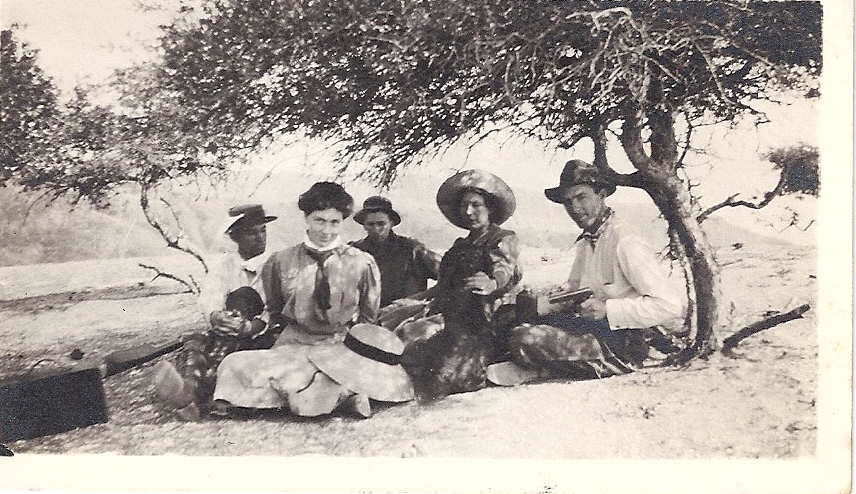

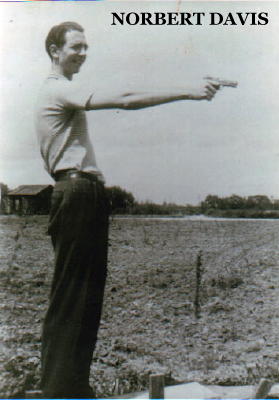






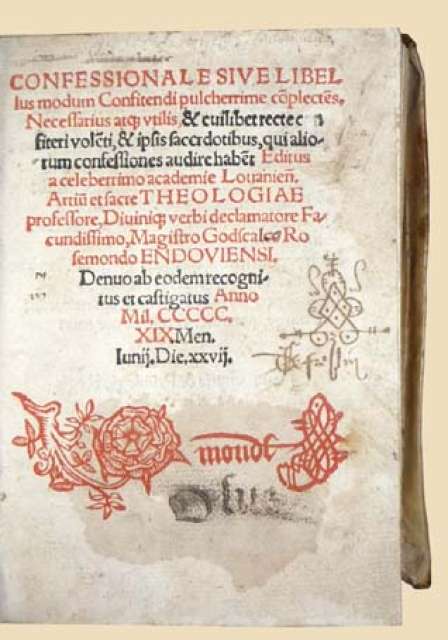


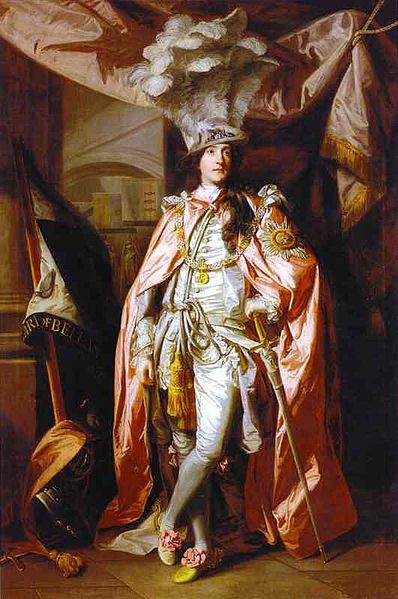











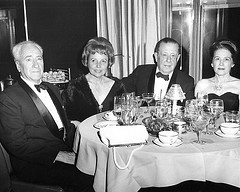
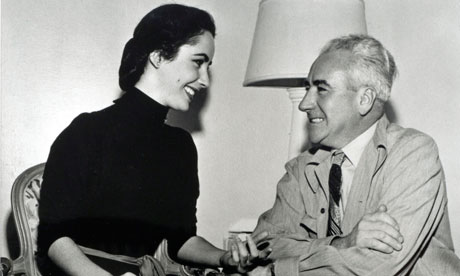


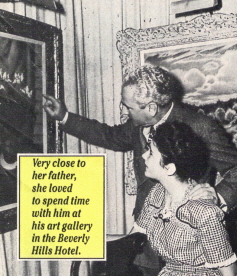

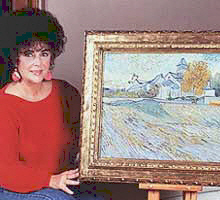


Reblogged this on Rosamond Press and commented:
I am….The Rose Line!